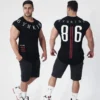The Charm of Mafalda: A Brief Introduction to the Iconic Character
Mafalda, a young girl with a distinct bob haircut and an unwavering commitment to social justice, was created by Argentine cartoonist Quino in the 1960s. From her inception, this spirited character captivated audiences worldwide with her intelligent insights and poignant critiques of societal issues. Mafalda embodies the curiosity of childhood while simultaneously representing a rebellious spirit—questioning the status quo and advocating for peace and equality. It is this blend of innocence and activism that allows her to resonate deeply with fans across generations and geographical boundaries.
The comic strips in which Mafalda appears often provide sharp social commentary on contemporary issues, including politics, education, and social inequality. Through her dialogues with friends, family, and adults, she expresses childlike wonderment and frustration at the complexities of the adult world. Her unique perspective invites readers to reflect on their values and the state of society, thereby instilling a sense of empowerment. Mafalda does not shy away from challenging norms, making her a fitting symbol for those who seek to express individuality through fashion, particularly through graphic tees.
Mafalda’s visual style is as iconic as her character. She is frequently portrayed wearing a simple yet striking outfit that mirrors the elements of playfulness and thoughtfulness she embodies. This aesthetic is not only endearing but also highly adaptable, allowing her image to be seamlessly integrated into various fashion forms, especially within the Harajuku style, known for its vibrant and eclectic expressions. The inclusion of Mafalda’s image on graphic tees serves as more than just a fashion statement; it is a manifestation of her spirit—a reminder to wear one’s beliefs and attitudes with pride. In a world increasingly focused on individuality, Mafalda continues to inspire a sense of style infused with meaning and a challenge to the norm.
Mafalda Graphic Tees: A Fashion Trend Among Women in Harajuku Culture
The Harajuku fashion scene has long been synonymous with bold expressions of individuality and creativity, and the rising trend of Mafalda graphic tees exemplifies this ethos. These tees are not merely articles of clothing but rather canvases that embody the vibrancy of Harajuku culture through their striking designs and colors. Characterized by imaginative illustrations and attention-grabbing graphics, Mafalda tees feature the beloved character from the Argentine comic, reinterpreted in various styles to resonate with Japanese fashion sensibilities.
The appeal of Mafalda graphic tees among women lies in their versatility and playful aesthetic. Women can easily incorporate these tees into multiple outfits, creating looks that range from casual to chic. Pairing a vibrant Mafalda tee with a denim skirt and sneakers can offer a laid-back, yet stylish appearance, while juxtaposing it with a tailored blazer and high-waisted trousers transforms the graphic tee into a sophisticated statement piece. This adaptability not only showcases personal style but also enhances the wearer’s confidence, enabling them to express their individuality creatively.
Moreover, the cultural significance of graphic tees in the Harajuku scene cannot be overlooked. These garments serve as a powerful medium of self-expression, allowing individuals to communicate their personality, beliefs, or humor without uttering a word. Women in Harajuku often utilize such clothing as a form of identity, wearing statement pieces that reflect their interests or values. When incorporating Mafalda graphic tees into a fashionable wardrobe, one could consider layering with unique accessories, or mixing and matching with prints and textures to create eye-catching ensembles.
The Mafalda graphic tee trend continues to flourish within Harajuku culture as it empowers women to embrace their uniqueness while celebrating the essence of fashion. With its focus on self-expression through bold designs, this movement underscores that clothing can be both a personal statement and a shared cultural experience.

































Reviews
There are no reviews yet.